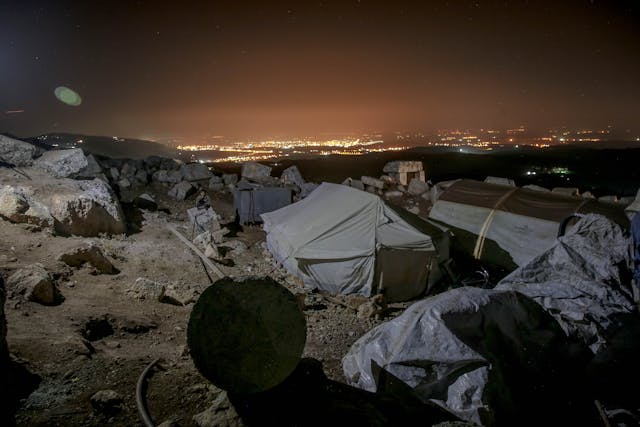Introduction
Refugee and displacement issues are among the most pressing humanitarian and geopolitical challenges of the 21st century. Conflicts, persecution, environmental disasters, and economic instability have forced millions of people across borders and within countries, often under perilous conditions. With over 100 million forcibly displaced individuals globally—including refugees, internally displaced persons (IDPs), asylum seekers, and stateless people—understanding how to respond to and manage displacement is vital for governments, NGOs, UN agencies, and host communities.
This course is designed to provide professionals with the knowledge, frameworks, and practical tools needed to address the complex legal, social, economic, and psychological dimensions of displacement. Whether you work in humanitarian response, policy development, migration governance, or social services, this training will help you deliver effective and rights-based support to displaced populations.

Understanding Refugee and Displacement Issues
Displacement is not a temporary or isolated issue. It is deeply interconnected with conflict, inequality, environmental degradation, and global governance. The course begins with a foundational overview of key concepts:
Definitions and Classifications
Participants will learn the precise legal definitions of:
- Refugee: Someone who has fled their country due to a well-founded fear of persecution based on race, religion, nationality, political opinion, or membership in a particular social group (1951 Refugee Convention).
- Internally Displaced Person (IDP): Someone who has been forced to flee their home but has not crossed an international border.
- Asylum Seeker: Someone who has applied for refugee status but whose claim is not yet determined.
- Stateless Person: An individual who is not considered a national by any country under its laws.
These distinctions are essential for understanding entitlements, rights, and international protection obligations.
Course Objectives
By the end of this course, participants will be able to:
- Understand international legal frameworks governing refugees and IDPs.
- Analyze root causes and drivers of displacement.
- Design inclusive and context-sensitive programs for displaced populations.
- Navigate the politics of refugee protection and border management.
- Integrate mental health, gender, and child protection into displacement response.
- Build durable solutions for long-term displacement, including return, integration, and resettlement.
Causes and Trends in Displacement
Conflict and Persecution
The majority of refugees originate from conflict zones where state and non-state actors engage in targeted violence, ethnic cleansing, or repression. Examples include Syria, Afghanistan, and Myanmar.
Environmental and Climate Displacement
Floods, droughts, rising sea levels, and extreme weather are increasingly forcing people from their homes. While international law does not yet formally recognize “climate refugees,” the need for proactive policy is growing.
Development-Induced Displacement
Infrastructure projects such as dams, urban expansion, and mining can displace large populations, often without adequate consultation, compensation, or resettlement planning.
Mixed Migration
Displacement is often linked with broader migration flows, where economic, environmental, and protection factors intersect, requiring integrated responses that distinguish between voluntary and forced movement.
International Legal and Policy Frameworks
This module covers global standards and instruments:
- 1951 Refugee Convention and 1967 Protocol
- Guiding Principles on Internal Displacement
- Global Compact on Refugees (GCR)
- Global Compact for Safe, Orderly and Regular Migration
- UNHCR’s mandate and operational policies
- Regional frameworks, such as the Kampala Convention (Africa) and Cartagena Declaration (Latin America)
Participants will analyze how these instruments define protection obligations and guide national policies and humanitarian operations.
Reception, Registration, and Asylum Systems
Reception Mechanisms
- Emergency shelter, basic services, and information provision
- Initial vulnerability screening (e.g., unaccompanied minors, elderly, disabled)
Registration and Documentation
- The importance of biometric registration, identity verification, and issuing legal documentation
- Challenges such as legal status ambiguity or lack of civil registration
Asylum Procedures
- Access to territory and non-refoulement (the principle that no refugee should be returned to a place where their life or freedom is at risk)
- Due process, appeals, and protection against arbitrary detention
You may also be interested in other courses in the Humanitarian and International Development
Rights of Displaced Persons
Refugees and IDPs are entitled to specific rights under international law. This course explores:
- Right to non-discrimination
- Right to education, healthcare, and work
- Freedom of movement and residence
- Protection from gender-based violence and trafficking
- Access to justice and legal aid

Protection and Assistance Strategies
- Conduct protection risk assessments in camps and host communities
- Design gender-sensitive and child protection programs
- Integrate psychosocial support and trauma-informed care
- Prevent and respond to sexual and gender-based violence (SGBV)
- Use cash-based interventions and community feedback mechanisms
The Role of Host Communities and Social Cohesion
- Fostering coexistence and shared benefits
- Engaging local leaders, municipalities, and civil society
- Promoting inclusive service delivery
- Mitigating tensions through dialogue, community projects, and grievance mechanisms
Durable Solutions
Ending displacement requires long-term strategies that address root causes and promote agency. Participants will evaluate:

- Voluntary repatriation: Conditions of return, reintegration support, and monitoring
- Local integration: Pathways to legal status, economic participation, and citizenship
- Resettlement
Case studies will highlight what works and where challenges remain in delivering durable solutions.
Who Should Attend
This course is ideal for:
- Humanitarian aid workers and field officers
- Government officials in migration, health, and social services
- NGO program managers and policy advisors
- UN agency staff (UNHCR, IOM, UNICEF, etc.)
- Legal professionals and human rights advocates
- Researchers, journalists, and academics in migration studies
Methodology
Participants will engage through:
- Expert-led sessions with international practitioners
- Real-time scenario planning and case study simulations
- Human rights-based programming workshops
- Group presentations and problem-solving labs
- Personal reflection sessions with displaced voices and experiences
Each participant will also develop a practical action plan for improving displacement response in their local or organizational context.
Outcome for the Course Sponsor
Sponsoring this course strengthens your organization’s ability to respond to one of today’s most urgent humanitarian challenges. It positions your institution as a rights-based, globally connected actor in the field of migration, displacement, and social protection.
By investing in this training, you:
Contribute to more peaceful, inclusive, and resilient societies
Build capacity for responsible and effective protection
Ensure compliance with international legal and donor requirements









